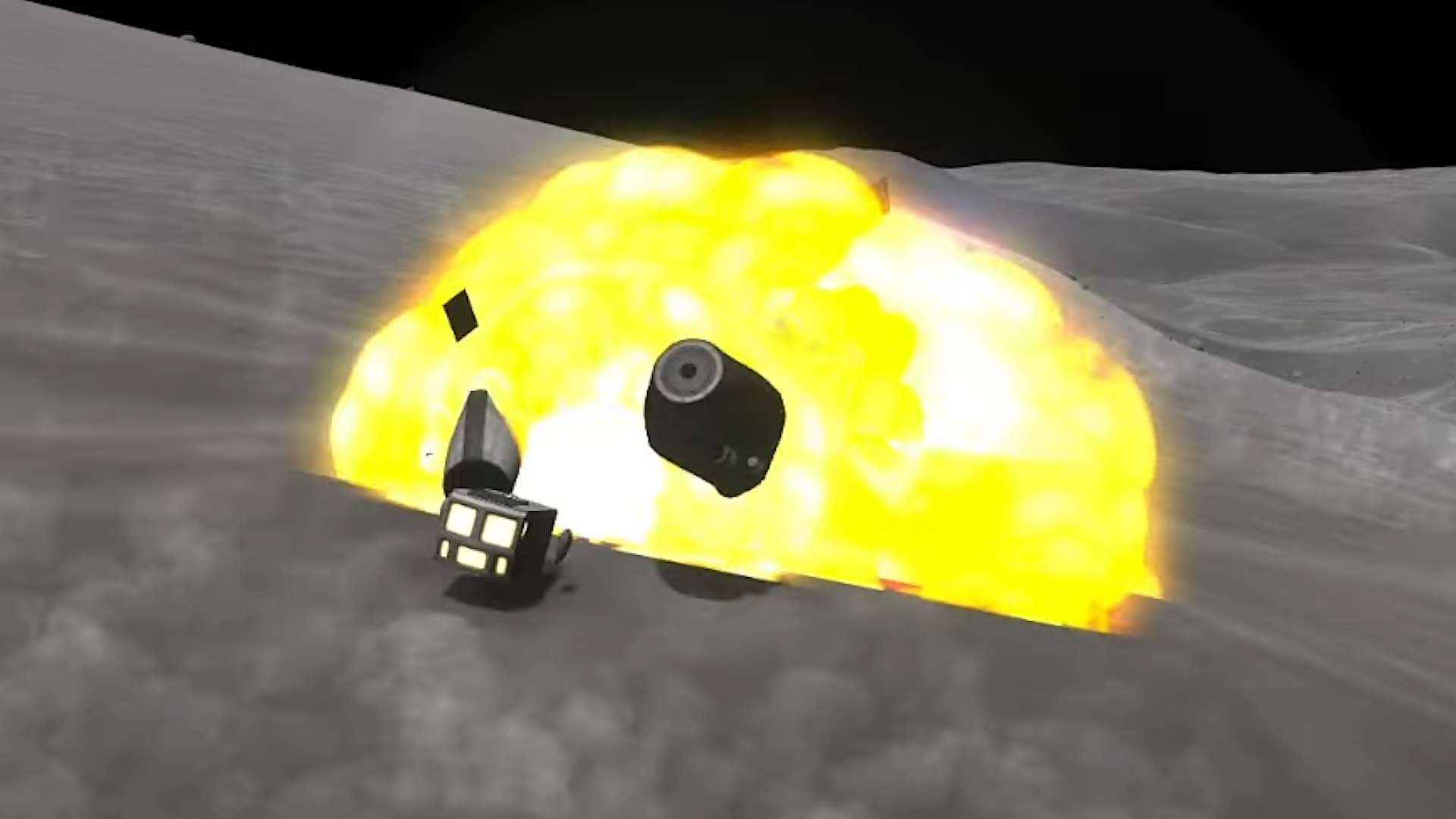
Bethesda's mega RPG Starfield looms on the horizon, arriving planetside in September—and the excitement for some fans has reached a fever pitch. One such fan by the name of SWDennis on Youtube decided to try and contain this excitement by recreating the game's starter ship—the Frontier—in Kerbal Space Program (KSP) and, in typical KSP fashion, the poor thing cannot land to save its life.
The problems with this ill-fated vessel unfortunately go a little further than a poor helmsman, however. "It's an aerodynamic mess and would never fly in real life," SWDennis, who goes by the name of Space_Scumbag on Reddit, wrote in a thread where they shared their cursed creation.
In another comment, they delve into the logistical issues which make the Frontier so explosion-prone: "The main problem is the alignment of the main thrusters and centre of mass. They don't align at all … even if the downwards thrusters [were] strong enough for flight and the heavy mass of the spaceship. Their exhaust plumes would be like 20m long plasma blades cutting everything under them to shreds, even the ground would have a few metres shaved off."
While KSP obviously isn't a 1:1 recreation of the real world, it's not an entirely inaccurate simulation. Speaking to Polygon in 2014, Doug Ellison of NASA's Jet Propulsion Laboratory sang the game's praises for introducing real-world rocket science to kids: "I watched a young kid—probably less than 8 years old—playing KSP and using words like apogee, perigee, prograde, retrograde, delta-v; the lexicon of orbital mechanics. To the layperson, orbital mechanics is a counter-intuitive world of energy, thrust, velocity, altitude that this kid—just by playing Kerbal—had managed to get his head around."
Not that this matters, exactly. First off, when you start entering the realm of science fiction, you also start entering the realm of made-up materials, fuels, and engines. Maybe there's a fuel in the world of Starfield that can create the thrust necessary without vaporising the earth beneath it with "20m long plasma blades".
There's also the very reasonable argument that this is a video game, and while KSP's intricate physics are to be admired, anyone that's tried to launch a rocket in that game without doing their homework can confirm that it'd be a huge difficulty wall to engage with that sort of thing in Starfield's ship builder. I don't want to be worrying about a "lexicon of orbital mechanics" when I'm pulling off the biggest sandwich heist the galaxy's ever seen.
Or maybe there's a deeper conspiracy here. Maybe this is why, as user MarshmallowBlue points out, there's no atmospheric flight. "That's why we have landing animations," comments user afonsolage, "so our ship doesn't blow up". Are we certain Starfield doesn't just take place in some big simulation? Has anyone ever manually landed a ship in the Starfield canon? Are we all just puppets on Todd Howard's space strings?
Jokes aside, this is a really cool project nonetheless, even if the poor thing can't so much as graze a rock without blowing itself to smithereens. What's cooler still is that SWDennis actually has managed to get a wrangle on the argumentative vessel, as they show in a separate video which you can watch below.
While it still hits the ground with a worrying amount of clunking, they've proved that taming this particular mechanical beast is very much possible. I, for one, am glad the digital rocket scientists of the modern era are handling this kind of work for me. After all, once the game launches I'll be busy making the ugliest, least aerodynamic brick possible in service to the Great Serpent, praise be to House Va'ruun.







